Able is Albo, but will poll be Morrison’s Waterloo?
Even though Labor is back in the fight, it faces a fierce battle to defeat Scott Morrison — and Anthony Albanese knows it.
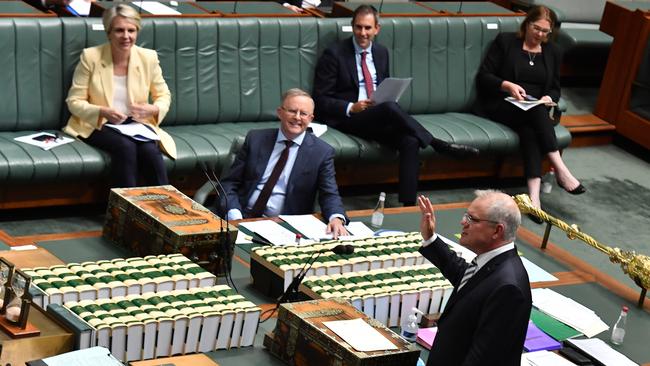
Albanese knows he cannot rely on the 2021 zeitgeist — the emotional demand by women to re-set the norms of respect and justice — to deliver victory, and must respond to the changing social and economic order triggered by COVID-19, the consequences of the recession, and the far greater expectations on government.
The paradox of the pandemic is that it has narrowed the policy gulf between Coalition and Labor. It has brought them closer together. Ask Scott Morrison and Anthony Albanese about the pivotal issue of the next election and they give the same answer: jobs, jobs, jobs. Both leaders ride the road carved out by the pandemic — fiscal expansion, government initiatives, high debt, and economic restructuring — and shape their rival tool kits on the same platform.
The central theme of the election is obvious. Don’t be misled into thinking it will be women’s rights despite the permanence of this cultural reckoning. The central theme will be the competing plans to reconfigure our economic and social polity in the more unpredictable and dangerous post-pandemic world, where vast changes are under way. The prize will accrue to the leader best able to capture the times.
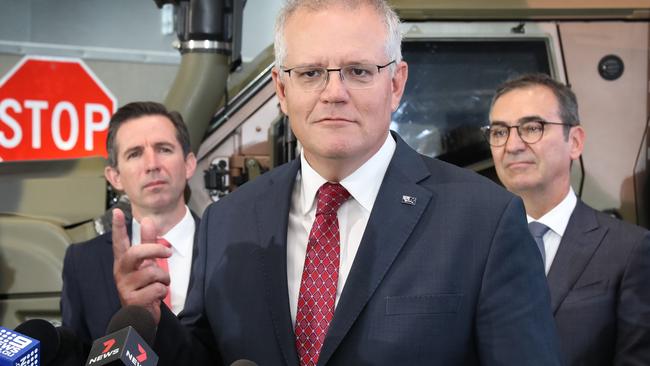
In the post-pandemic world, governments will face more pressure to restructure their economies, prioritise the digital revolution, re-engineer supply links, achieve greater productivity, boost infrastructure, reduce unemployment, advance renewables, integrate lower emissions with new job opportunities, revive regional industry, and manage transformative changes in the labour market involving the care sector, skills and work practices.
This will be played out against an electorate with a high focus on two issues: personal security, and a revived sense of community collaboration — a product of COVID where everyone was called on to protect anyone.
The Australian benchmark was defined recently by Reserve Bank governor Philip Lowe and his senior officials saying that record low interest rates will stay on hold — even as far as 2024 — in order to reduce unemployment to the low 4s or even the high 3s to get wages growth back to 3 per cent plus. Whether this is achievable and at what cost are burning questions.
Albanese suddenly looks far more competitive, given Morrison’s struggle with the emotional side of the justice for women task. There is agreement on both sides that the next election will be tight and close. The significance of the past six weeks for Labor is obvious; it now thinks defeating Morrison is feasible, and it has repressed talk about Albanese’s leadership.
Albanese has damaged Morrison’s brand, but the real test lies elsewhere — on economic and social policy atmospherics. Albanese knows this. From the day he became leader, his mission has been to re-cast himself as a Labor centrist.
Hailing from battler origins, Albanese aspires to become the most conservative, least threatening leader to ever emerge from the tribal left. He lives with the daily imperative of both honouring Labor reformism but burying Bill Shorten’s “big target” folly from the 2019 election when Labor ran on an ambitious, policy-thick, left-wing redistributive agenda and was nailed by Morrison.
Herein lies the dilemma. Albanese and his leadership group know that Labor cannot win on a safety-first “small target” strategy. Their job is to redefine social democracy post-pandemic. It comes amid a decisive shift to the left in Western democracies off the Keynesian economics driven by the recession.
US President Joe Biden is now engaged in a historic reorientation of American polity to the left that our grandchildren will read about in the history books in 50 years time. After passage of his $US1.9 trillion COVID rescue package, Biden now proposes a $US2 trillion Jobs Plan to create 18 million jobs by modernising highways, roads, bridges and main streets, greening the economy, boosting electric cars, insisting on a Buy American agenda financed by lifting the company tax rate from 21 to 28 per cent, reversing Trump’s policy and sparking angst from Republicans.
Biden aspires to be a figure of destiny and reverse half a century of pro-market American policy. Predicting that child poverty will be cut in half, Biden said: “We will all do better when we all do well.” He declared: “Wall Street didn’t build this country; you, the great middle class, built this country. And the unions built the middle class.”
Australian Labor cannot replicate such audacity. Our politics and policy are far different. There are two pivotal reflections on our coming economic debate: Morrison will benefit from the return of the economy to centre stage, but Albanese calculates the new context, with its greater emphasis on government intervention, will favour the ALP tradition. In short, the economic debate has changed.
Negotiating this path won’t be easy. As the US moves to the left, Labor moves to the centre. Albanese says he won’t embrace the big “tax and spend” Shorten agenda. Morrison doesn’t believe that. He thinks Labor cannot change. But Labor must change — it cannot revert to a traditional left economic stance because that invites another Morrison victory.
Albanese looks towards a more selective agenda. His priorities are: don’t scare the voters; offer practical policies that assist families and create jobs; and put the government into a negative frame as “out of ideas and out of touch”.
He seeks to tap into the longing for security that the ALP premiers have exploited during the pandemic. The social contract in Australia runs deeper post-pandemic, with Albanese ditching the class warfare divisions espoused by Shorten for another refrain: “working with unions and the business community” in co-operation. It sounds good, but the hard evidence is still scant.
Albanese’s repositioning can border on the anaemic. “What Labor offers under my leadership is sound, considered, honest government,” he told this week’s ALP National Conference.
This reveals his dilemma: how to eliminate “true believer” radicalism that dooms Labor as a 35 per cent minority party, yet simultaneously ignite the fire of enthusiasm any opposition leader needs to win an election.
Labor’s encompassing theme will be economic rebuilding. Albanese’s pledge is “to build back strong”, and his deputy, Richard Marles — in the critical shadow portfolio of national reconstruction, employment, skills, small business and science — is at the forefront of this effort.
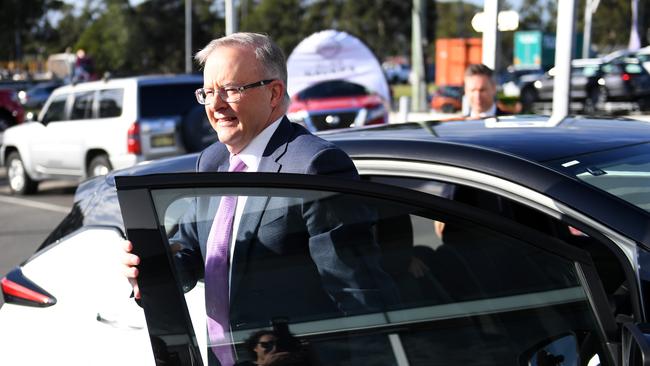
This week, Labor unveiled a $15bn National Reconstruction Fund to partner with the private sector to revive manufacturing, promote renewables investment, and diversify industry.
The aim is to buttress Labor’s messages: it stands for a future made in Australia, safety at work, supporting our industries, reviving manufacturing, and building a modern economy.
“If there is anything COVID has taught us, it is the need for Australia to be a place which makes things,” Albanese says. Yet this embodies Labor’s challenge. It wants to exploit the cultural nostalgia engulfing the country for new government-directed initiatives, while avoiding any return to the historic, protectionist failures of our past.
Albanese seeks to integrate his support for women with productivity dividends. Witness Labor’s previous pledge of a 90 per cent childcare subsidy for Australian families leaving 97 per cent of families better off. Expect a Morrison/Albanese budget competition for programs to highlight support for women with workforce participation.
Chris Bowen’s job as shadow minister for climate change is to transform this equation: turn climate change into a job-creation opportunity and an economic plus by tapping into the competitive position of renewables, while neutralising damage on Labor’s right flank. Albanese supports existing coal power and exports while pointing out that market realities mean no new coal-fired stations.
On tax, Albanese has ditched Labor’s franking credits policy from 2019. But negative gearing and capital gains policies still sit on the table, yet to be revamped or removed — another crucial decision. Labor will project itself as a champion of the digital economy but put a premium on job security, another potential contradiction it must finesse.
Labor’s central problem remains the Morrison/Frydenberg pragmatism. During the 2020 pandemic, they redefined Liberal Party economics by ditching ideological orthodoxy to embrace massive fiscal stimulus, large-scale government intervention, and social as well as economic support. While Morrison says the government wants a business-led recovery and shuns taxation increases, he has significantly reduced Labor’s scope to maximise economic policy differences.
While the Liberals don’t possess an ideological tradition for the current times, that is unlikely to worry Morrison, who is unburdened by past norms. The question remains: what are the policies for the next term that Morrison and Frydenberg will take to the election?
The pivotal issue for Morrison is his ability to keep the government together, united and functioning in the parliament. The cage was rattling during the past six weeks. Morrison’s media enemies on the populist right were drum-beating harder than ever, burning with resentment that they don’t “own” Morrison, hostile to his pragmatism in responding to the pandemic, and angry about his reluctance to wage the culture wars.
The challenge for Albanese is to avoid another repetition of Labor’s fate as a “competitive loser” — given the party, since Keating’s 1996 departure, has won only one of the past nine federal elections in its own right. That was Kevin Rudd’s 2007 victory. While Julia Gillard prevailed at the 2010 poll, that was only as a minority government PM. One out of nine suggests serious structural reassessment is needed.
The lesson is that Labor will only win by stepping out of its existing stakeholder comfort zone based on unions, tertiary-educated progressives, high-income cosmopolitans, young people, professional women, the welfare sector, and adherents to “causes”, from climate change to social justice to identity politics. Labor is weak in the suburbs and in the regions. This voting coalition is impressive but inadequate. History suggests it cannot do the job and that it is too exclusive.
Albanese knows this. His future depends upon widening the coalition of voters who back Labor — in the suburbs and regions — without alienating the existing voters. Labor needs to avoid becoming a grievance-based vehicle.
The review of Labor’s 2019 election loss by Craig Emerson and Jay Weatherill identified the lost voters Labor must regain: low-income working people; vulnerable people in outer metropolitan, regional and rural communities; resource industry workers; and those employed in electricity, gas, waste, agriculture, fishing and manufacturing. Queensland poses a special and entrenched challenge, despite Labor’s consistent success at state government level.
Albanese, ironically, must protect his left flank, with the Greens ready to exploit his shift to the centre. Beyond this, watch for the impact Biden will bring. His election victory empowers Biden to talk centrist rhetoric but run a radical, big-spending, high-taxing, government interventionist agenda the like of which has not been seen in the US for 60 years at least, all courtesy of Donald Trump.
The conventional wisdom is Biden’s policies will create problems for Morrison, notably after his new emission-reduction targets are announced — and that’s true. But might his radicalism create problems for Albanese as well?
Albanese has been systematic in his approach to the leadership; he has marched away from Shorten’s mistakes, focused on five or six main themes, managed the National Conference and exploited the justice for women crisis to damage Morrison. So far, however, he has not delivered the indispensable factor that Whitlam, Hawke and Rudd produced in order to win from opposition — the imaginative narrative wrapped up in the compelling persona.


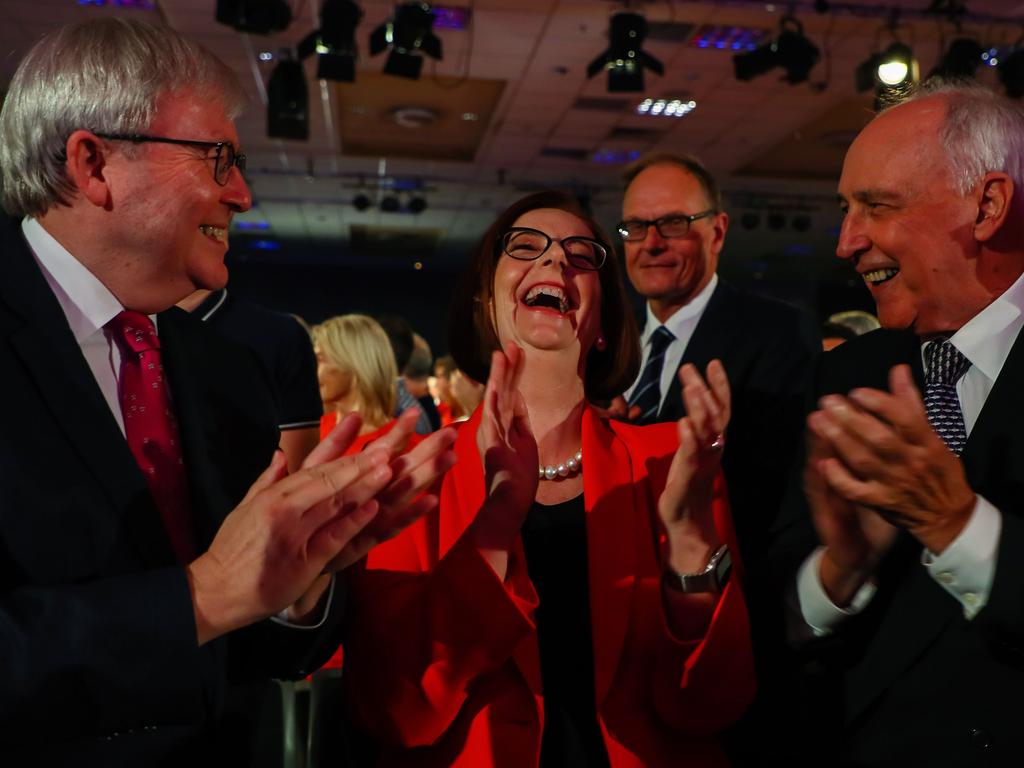
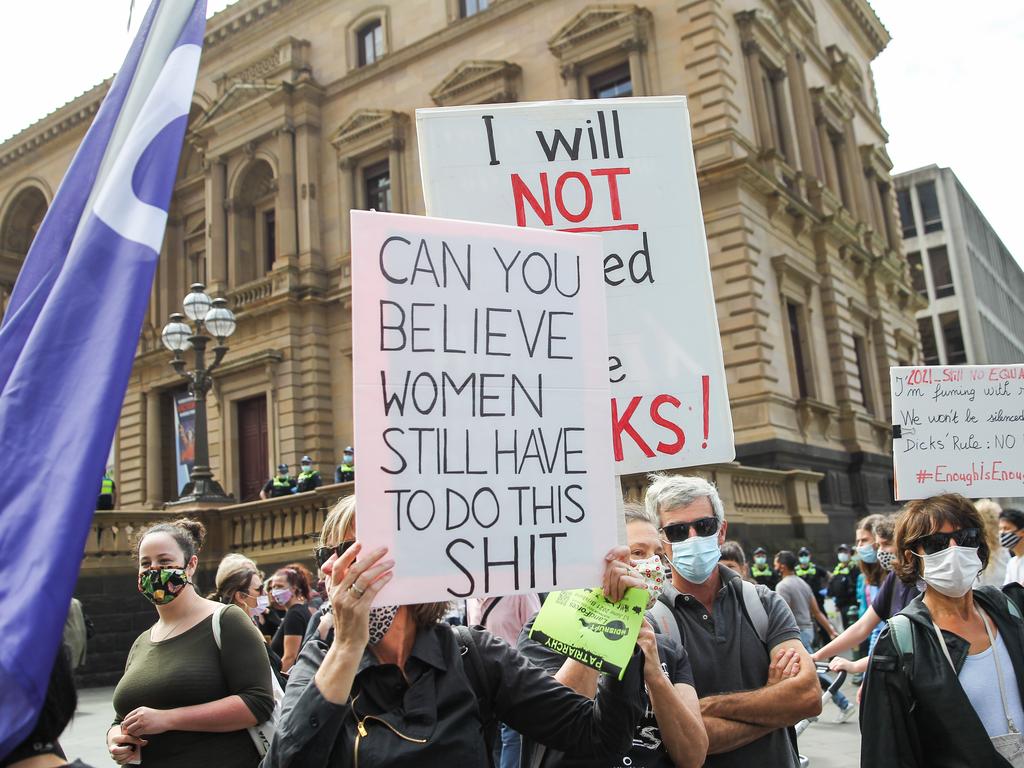


Despite the “justice for women” threshold event, the next election will be shaped by post-pandemic economic forces — the quest for jobs, the economic rebuilding, spiralling property prices, cheap credit and weak wages — pointing to a Morrison-Albanese contest of an entirely different dimension.